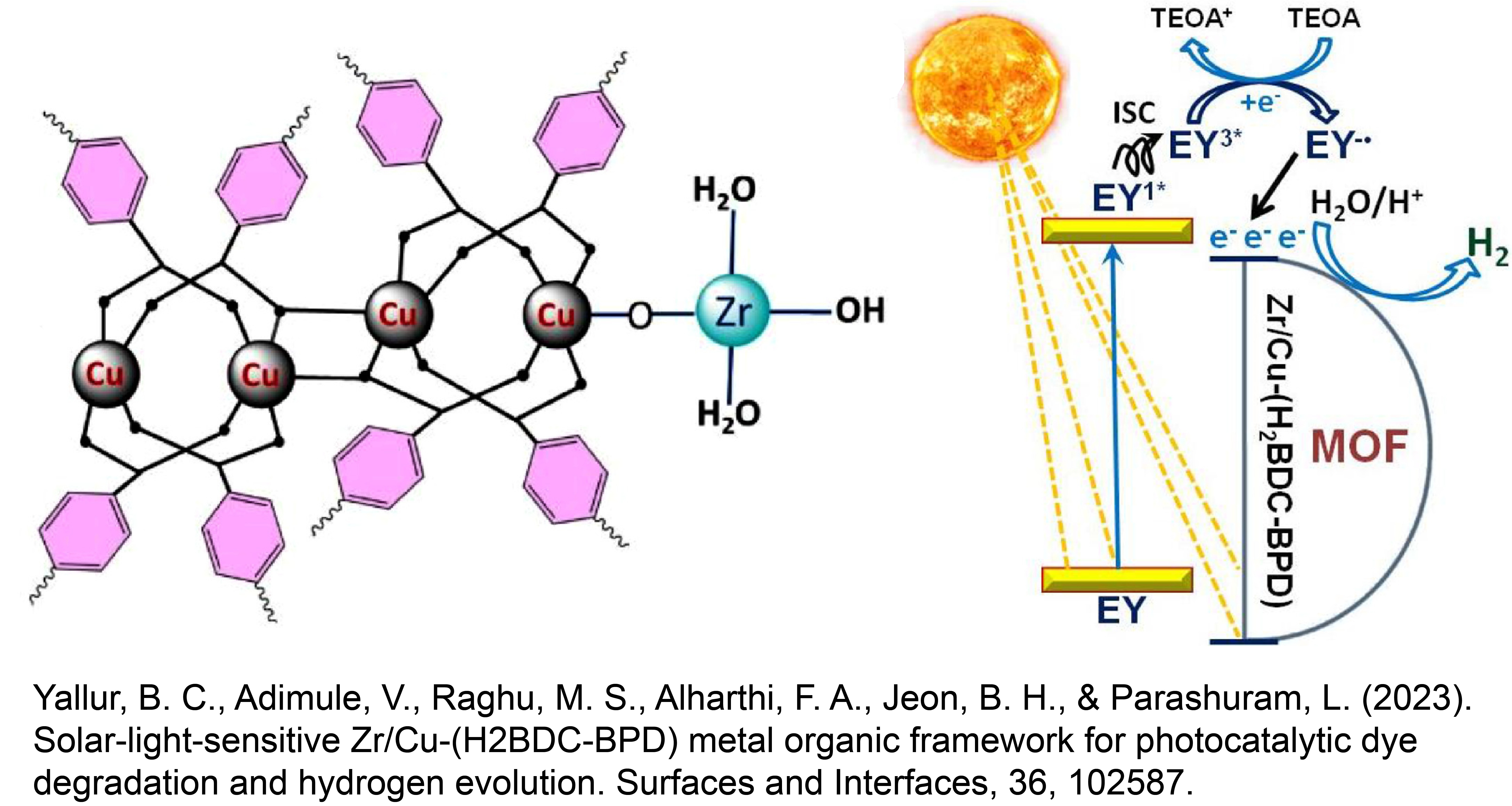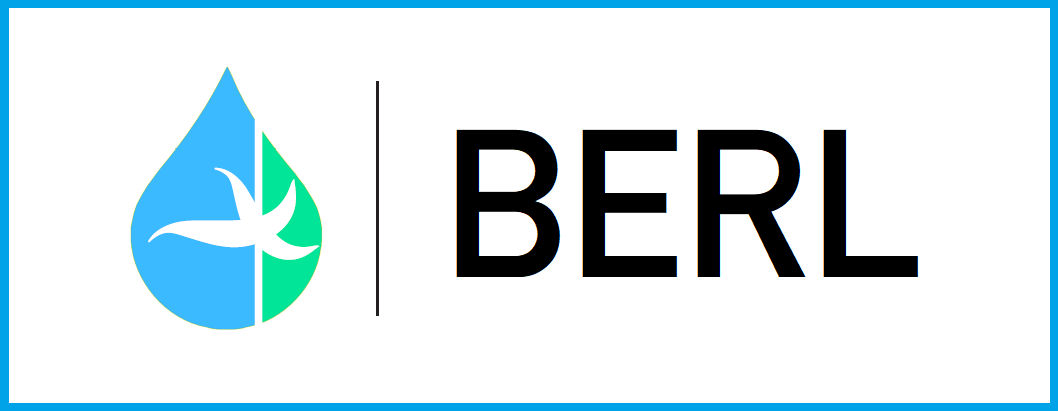Research
Research
Research at BERL
On the basis of environmental biogeochemistry, interfacial chemistry and microbiology, BERL conducts science & engineering research to produce sustainable bioenergy and to address various environmental problems.
Our lab research works have been primarily on
1) Bioenergy production using various biomass sources, and
2) Biogeochemistry of metals and (in)organic pollutants in natural and engineered environments.
Regarding the bioenergy research, we have shown that microalgae cultivation can be coupled with advanced wastewater treatment so that both higher removal of N, P from domestic wastewater and massive cultivation of microalgal biomass are achieved which might increase the economic feasibility of bioenergy production (biohydrogen, bioethanol, biobutanol and biodiesel) with a simultaneous improvement of treated water quality.
Another research interest on bioenergy production is co-digestion of sludge (produced from domestic wastewater treatment plant) with food waste which contains significant amount of fat, oil and grease (FOG). The focus of this research is to come up with an anaerobic microbial consortium which is capable of efficient degradation of long chain fatty acids (FOG) to short chain fatty acids. The final goal of this study is to enhance methane production through co-digestion of various biomasses with sewage sludge for better economic feasibility through the application of FOG degrading microbial consortium. Co-digestion of sewage sludge and technology advances in biogas industry might help to convince the government, research institute and industry to boost up the biogas business in S. Korea.
We have been also working on biogeochemistry of numerous (in)organic contaminants primarily in the natural environment, and occasionally in the engineered system. Our interfacial chemistry work stemmed from the careful investigation of reactions between Fe(II) and Fe(III) oxides where we observed interfacial electron transfer from sorbed Fe(II) to structural Fe(III) in Fe(III) oxides. Such interfacial electron transfer between sorbed metal atom and structural metal atom help us to conduct more careful studies on the sorption of U(VI) and Tc(VII) and subsequent reduction in the presence of Fe(II) ion in aqueous phase which will control the fate and mobility of such environmentally significant pollutants. Extending such interfacial chemistry, we have also conducted carefully designed biogeochemical experiments for more contaminants investigating biological and chemical dissolution, (bio)sorption, (bio)precipitation, desorption and redox reactions. Especially, the interactions between iron oxides and environmentally significant pollutants including U(VI, IV), Tc(VII, IV) have carefully studied focusing on their speciation, sorption, redox chemistry and mobility.
Bio-Group
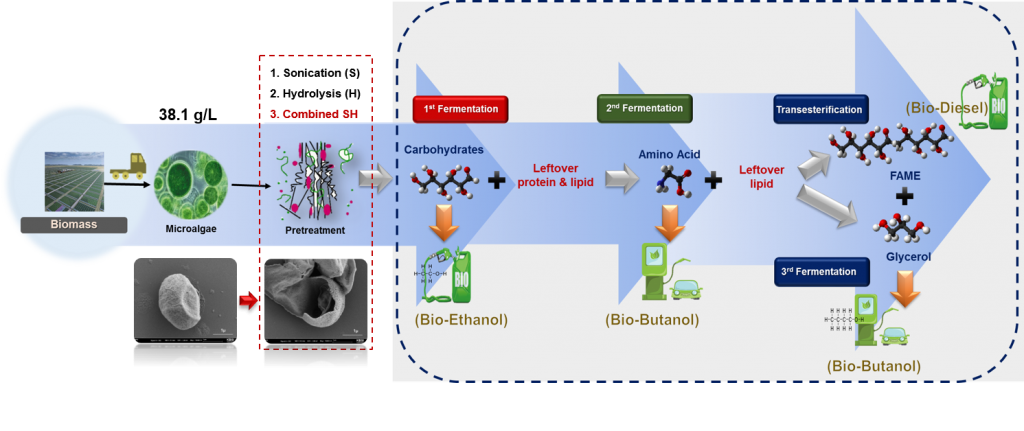
Microalgal Biofuels
Microalgae, a third-generation biomass feedstock, has been of great interest among researchers and biorefinery industrialists due to its perceived benefits in the production of biofuels and value-added chemicals with the most attractive feature “zero waste generation”. Microalgae have many advantages such as very fast growth rate and multiplication in various environments. Nevertheless, large-scale cultivation and harvesting of microalgae for the biofuel production is expensive and technically difficult. Therefore, it is necessary to improve the techno-economic efficiency of microalgae biofuels by increasing the productivity of biomass and its biocomponents i.e., carbohydrate and lipid, and developing effective harvesting methods. To this end, this laboratory is conducting a process study to produce eco-friendly bioenergy (biohydrogen, bioethanol, higher alcohol, biodiesel) using microalgae separated and cultured directly from the wastewater treatment plant effluent.
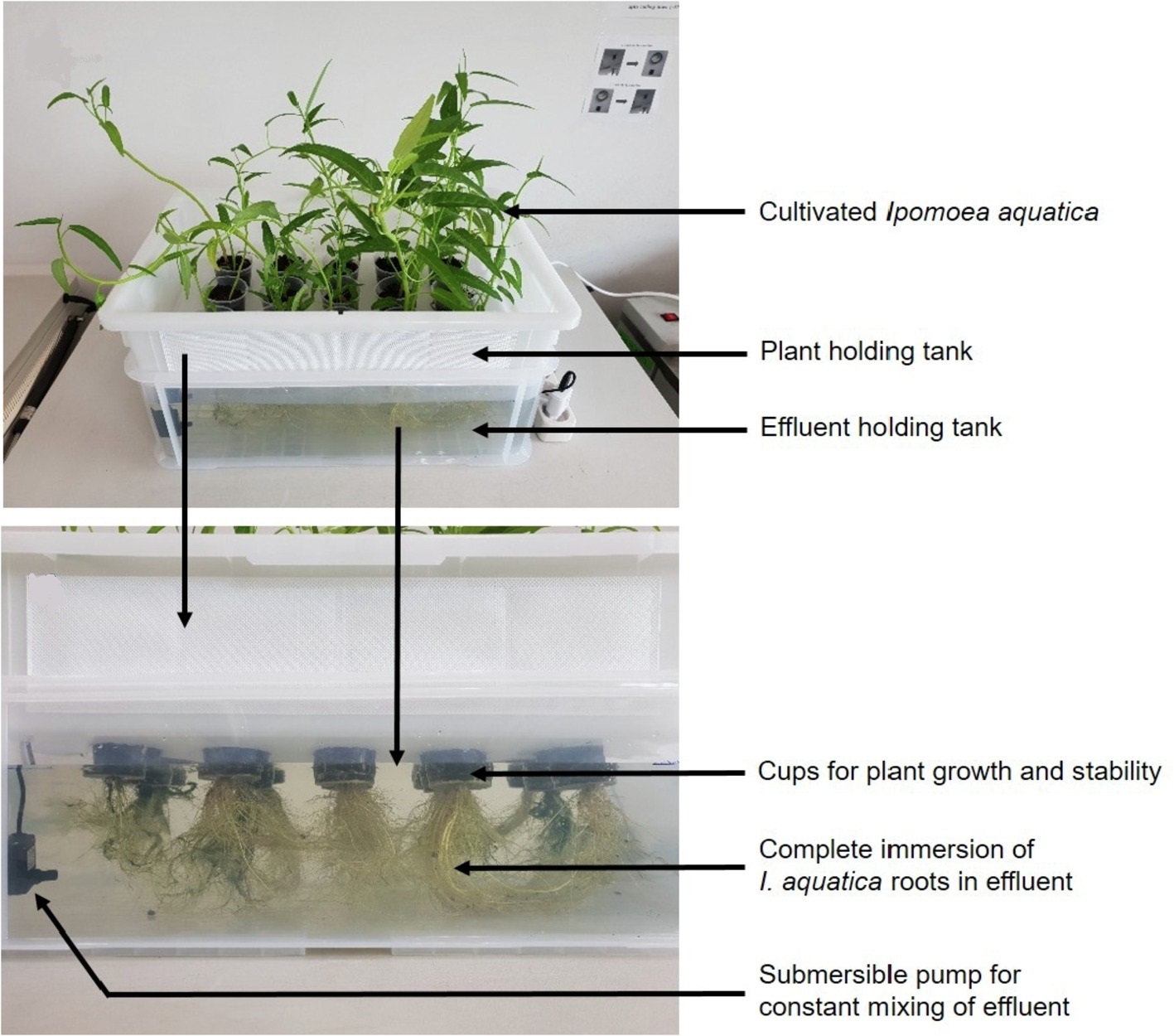
Phytoremediation
Plants serve as excellent markers of worldwide pollution as they are found in almost all regions of the globe, and they are involved in the accumulation and further biotransformation of organic contaminants wherever they are exposed to polluted environments. Aquatic plants mainly remove organic contaminants through direct bioadsorption and/or bioaccumulation. The metabolism/degradation of organic compounds, including some PPCPs, can occur once plant has taken-up the contaminant from the soil or water. The uptake and translocation of contaminants by plants is mostly dependent on the species involved and the concentrations, physicochemical characteristics (e.g., water solubility, polarity and hydrophobicity) of the contaminants.
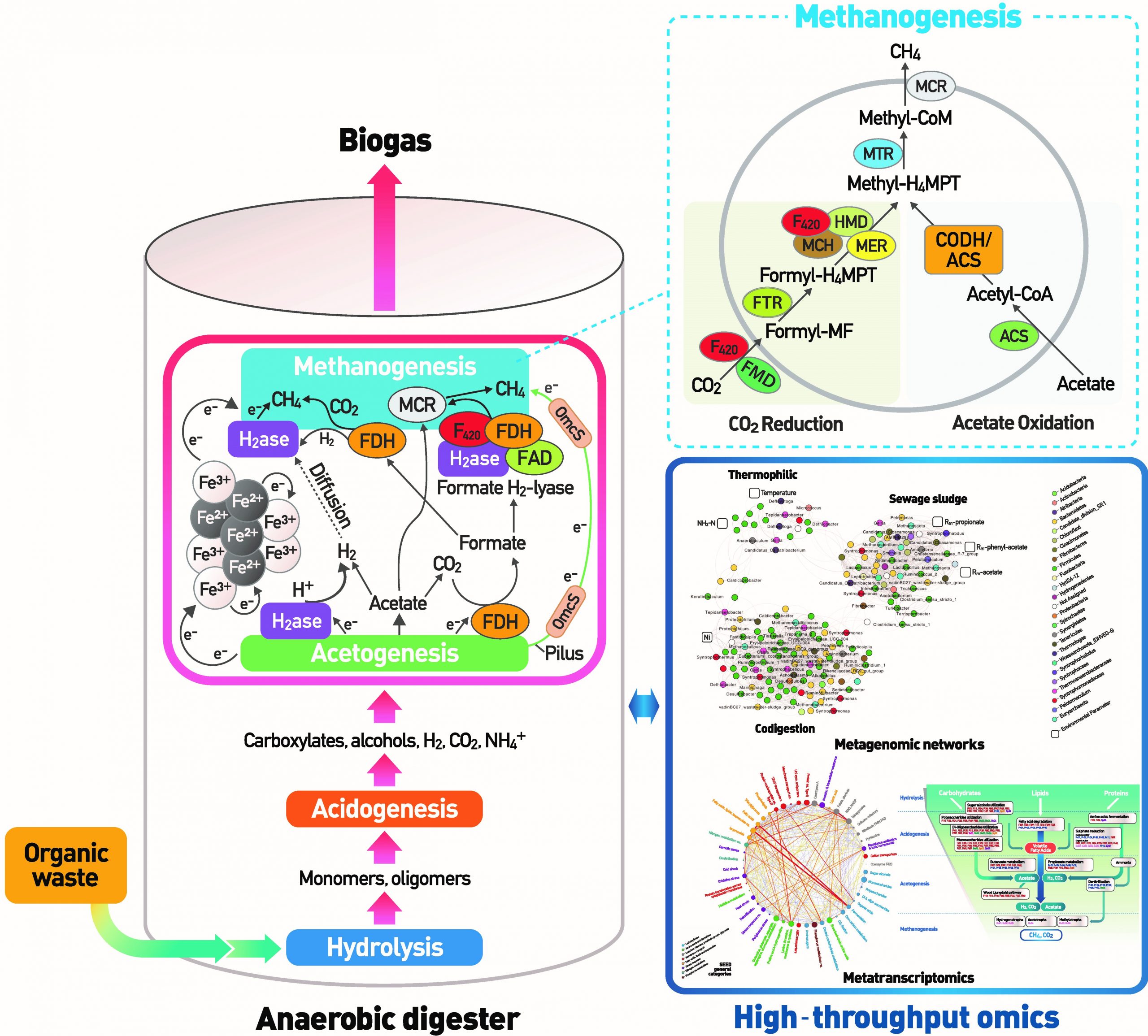
Biogas
Enhancing biogas production via the anaerobic digestion or fermentation of organic waste appears to be a promising waste-to-energy model for offsetting increasing global energy demands. The physicochemical complexity and heterogeneity of organic waste are bottlenecks that alter microbial communities and the close symbiosis between hydrolytic and fermentative bacteria, syntrophic bacteria, and methanogenic archaea. In this regard, the most abundant carbonaceous organic waste including mixed fruit wastes (FW), and fat, oil, and grease (FOG) are considered in this laboratory due to their high organic contents and conversion efficiency to biogas. We also investigate the microbial dynamics during feed alterations and their implications on the reactor performance by assessing the metabolic roles of these microorganisms. Our research outcomes and the developed microbial technologies could be effective for the industrialization of bioenergy production and simultaneous waste management for better environmental protection.
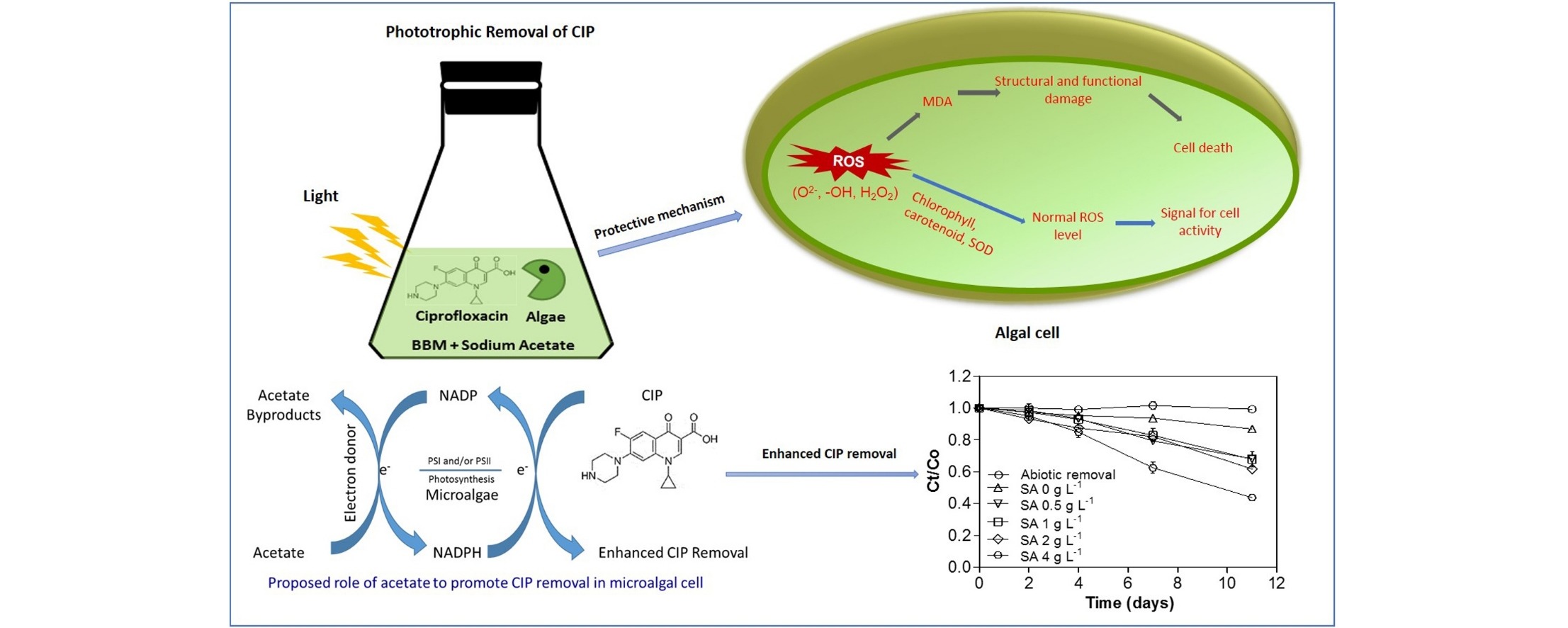
Phycoremediation
Microalgae are the primary producers in aquatic food webs, and they are key indicator organisms for assessing water quality and eco-toxicity of pollutants. Mixotrophic microalgae are native species in freshwater, mainly surviving on nitrogen- and phosphorous-rich compounds, and can effectively uptake organic pollutants as a carbon source for their growth. Bioremediation of contaminated waters by mixotrophic microalgae is a solar power-driven, ecologically comprehensive and sustainable reclamation strategy. Regardless of these advantages, there is immense need of scientific scrutiny concerning the efficiency and applicability of microalgae for the removal of emerging contaminants (ECs) from wastewater.
Chemistry-Group
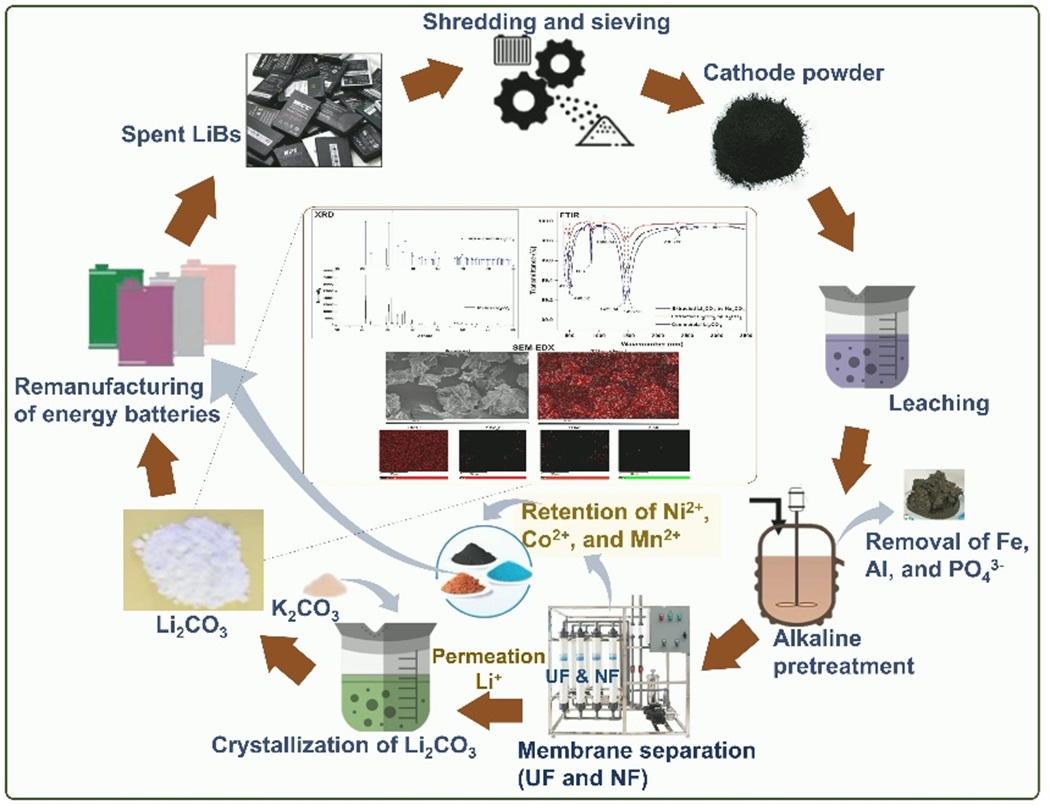
Resources Recovery
The end-of-life management of a large number of discarded lithium-ion batteries (LiBs) has become a global issue because of the steady increase in their usage every year. The development of novel technologies for the recovery and recycling of metal ions from decommissioned batteries to conserve resources has received significant attention. A novel membrane-based hybrid approach can be helpful in recycling commercially valuable metals while treating acidic leach liquor obtained from spent LiBs. The present novel approach paves the way for the industrial-scale recycling of lithium with other valuable bivalent metal ions present in spent LiBs.
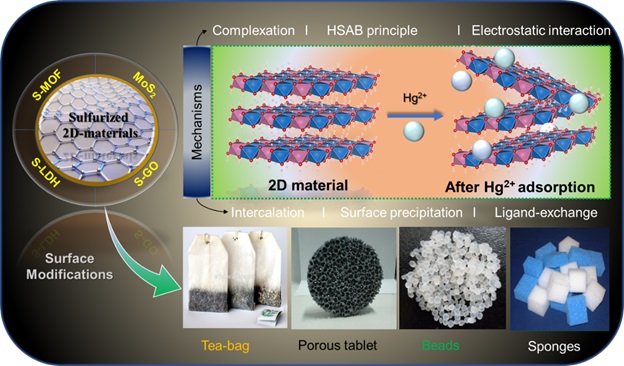
Adsorption
Adsorption technology plays a pivotal role in the water/wastewater treatment and purification process, an effective and versatile method for removing contaminants. Various adsorbents such as activated carbon, zeolites, and biochar exhibit high surface areas and diverse surface chemistries, enabling them to attract and capture a wide range of pollutants, including heavy metals, organic compounds, and dyes from aqueous solutions. Adsorption studies facilitate the development of adsorbents from waste materials, promoting resource efficiency and waste reduction. Repurposing materials like agricultural waste or industrial by-products into effective adsorbents contributes to a circular economy and minimizes environmental impact.
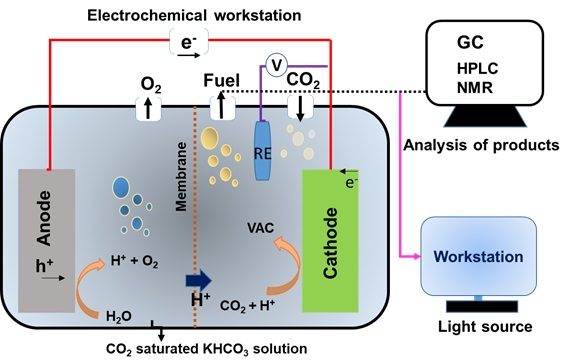
Carbondioxide Reduction
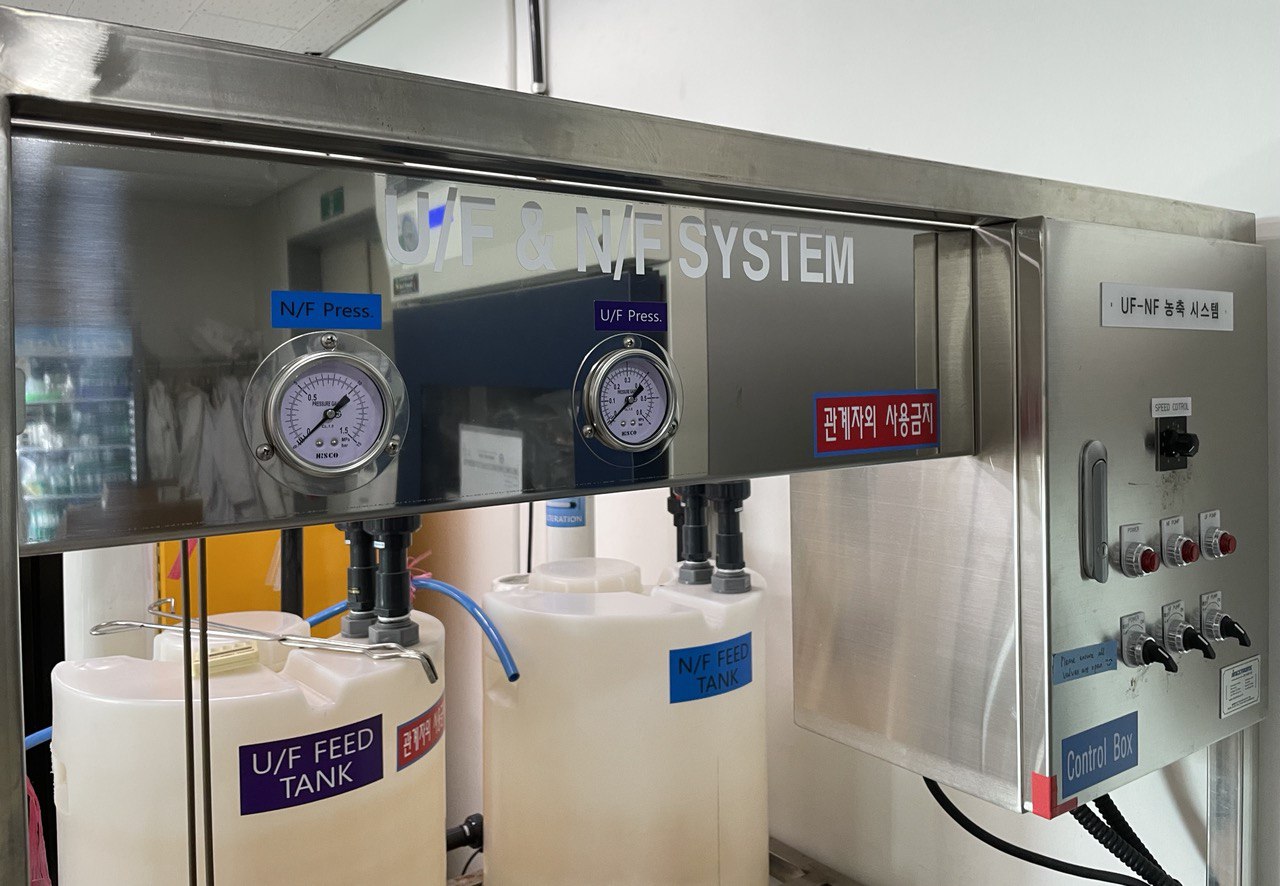
Membrane Filtration
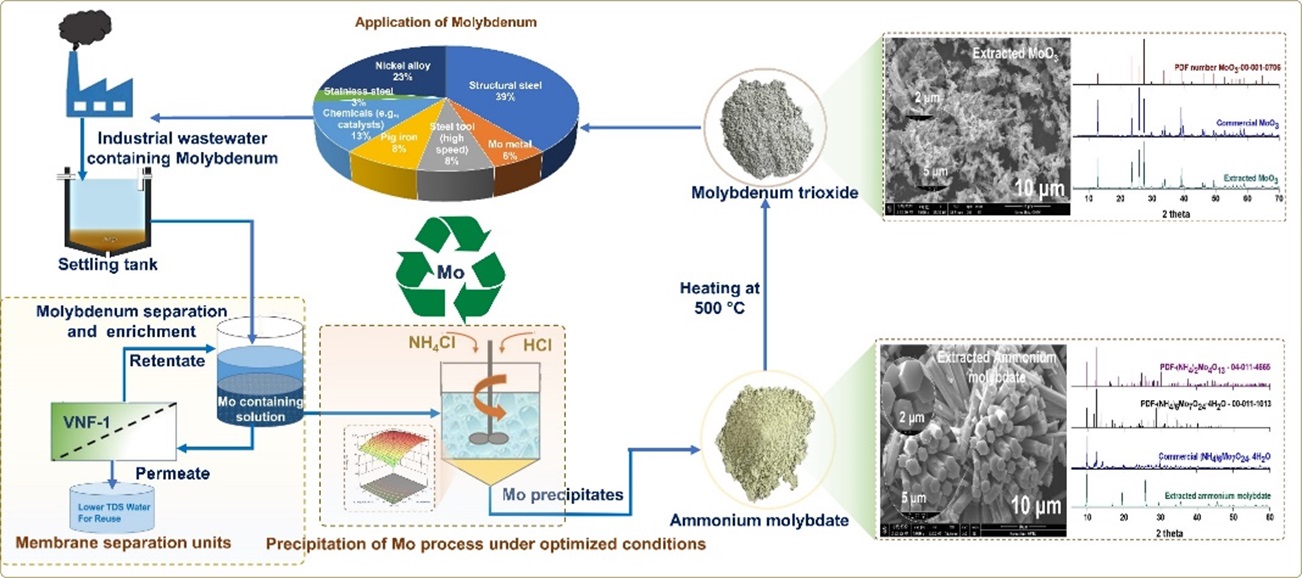
Membrane-Integrated Hybrid System
The depletion of primary resources and growing demand for raw materials in developed and developing countries due to rapid industrialization have necessitated technological advancement for recovering and recycling valuable byproducts from secondary sources. Various petroleum refining, electroplating, chemical, and mineral refining industries generate wastewater that contains molybdenum and other organic and inorganic contaminants. Wastewater treatment plants should be turned economically feasible, operationally attractive, and competent to transform waste into valuable byproducts by adopting an innovative approach. The membrane-integrated hybrid system is used to separate, purify, and concentrate molybdenum for subsequent recovery via chemical precipitation by optimizing the critical parameters using RSM. This system is expected to minimize waste emissions and increase commercial viability.
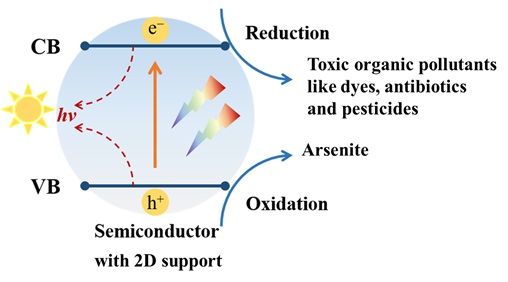
Photocatalaysis
